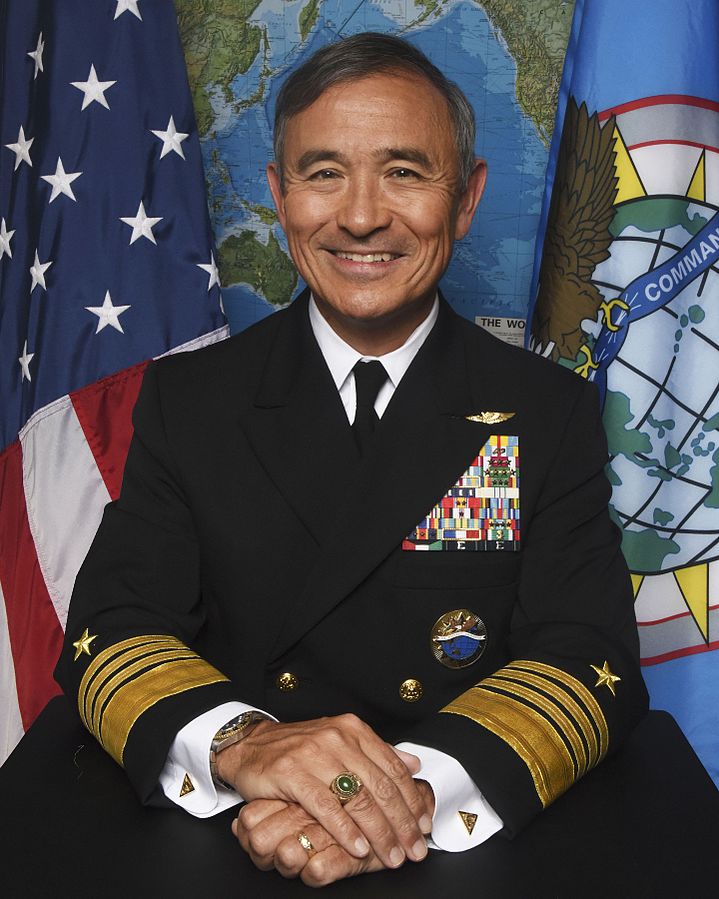 |
| Adm. Harry B. Harris Jr (Image: Wiki Commons) |
By Terri Moon Cronk
DoD News, Defense Media Activity
WASHINGTON, June 29, 2017 — Talisman Saber is a realistic and challenging exercise that provides opportunities for the United States and Australia to innovatively prepare for regional and global security challenges, Navy Adm. Harry B. Harris Jr., commander of U.S. Pacific Command, said today.
Speaking at the opening ceremony aboard the U.S. Navy amphibious assault ship USS Bonhomme Richard at sea off the coast of eastern Australia, the admiral said Pacom is partnering in the biennial exercise with Australian allies for high-end warfighting scenarios for the seventh time. About 33,000 American and Australian service members are taking part.
“Exercises like Talisman Saber are precisely where we really learn how to take advantage of cutting-edge technology to outpace our adversaries,” Harris said. “It’s also a perfect place for our forces to operationalize a very important concept.”
The Pacom commander said he has challenged the Army, Navy, Air Force and Marine Corps to execute multi-domain battle, “to find new ways to enable our joint and multinational combined forces to be faster, more precise, more cost-effective, and most importantly, more lethal.
‘Endless Possibilities’
“When I look at the Bonhomme Richard, I see endless possibilities for the future,” Harris said. “After all, you could say that amphibious ships are the original multi-domain battle platforms operating from the air, from the sea and from the land. So I need this blue-green team to lead the way during this exercise.”
Exercise Talisman Saber 2017 is the Bonhomme Richard Expeditionary Strike Group’s final certification, and it will also support efforts to operationalize the “up-gunned expeditionary strike group” concept, he said.
The month-long exercise will bring together the capabilities of an amphibious-ready group and a Marine expeditionary unit with F-35B Lightning II joint strike fighter aircraft, naval cruiser-destroyers and other enablers for the amphibious force to operate with more distributed lethality in a high-threat environment, Harris said. Such a force presents greater challenges to potential adversaries and more options to joint and combined component commanders, he added.
“I recognize this will be challenging, but as a combatant commander, I need you to create effects from any single domain to targets in every domain in order to fight tonight and win,” the admiral told exercise participants.
“If we have to fight tonight, I don't want it to be a fair fight,” Harris said. “If it’s a knife fight, I want to bring a gun. If it’s a gunfight, I want to bring in the MEU and the artillery of our friends, partners and allies … especially, like Australia.”
U.S.-Australia Alliance
Asking service members to remember the importance of the U.S.-Australia alliance, the admiral reminded them the alliance was forged in battle a century ago.
“We fought and died together in World Wars I and II. We fought communism in the hot wars in Korea and Vietnam and the Cold War throughout the latter half of the 20th century,” he said. “We fought together in the Gulf War. For the last decade-plus, we’ve fought side-by-side in the long wars in Afghanistan and Iraq. And today, Australia is a global leader in the fight against [the Islamic State of Iraq and Syria].”
The bond between the two nations is as important to their futures as it has been to their storied pasts, Harris said. “This alliance has strengthened peace and prosperity not only in the Indo-Asia-Pacific, but across the globe,” he added.
Train hard, safely and jointly, with a willingness to learn from each other, Harris told exercise participants.
“Strive to become a more interoperable, high-end fighting force,” he said. “Learn from your mistakes and take our training to the next level. Forge relationships that you can call on during crises, because we’re in this together.”
Harris added, “The Australia-U.S. alliance matters more today than ever before. It matters to our two great nations. It matters to the Indo-Asia-Pacific. And, it matters to (the) world. No one should doubt the staying power of this alliance to maintain security, prosperity and peace in this vital region.”
